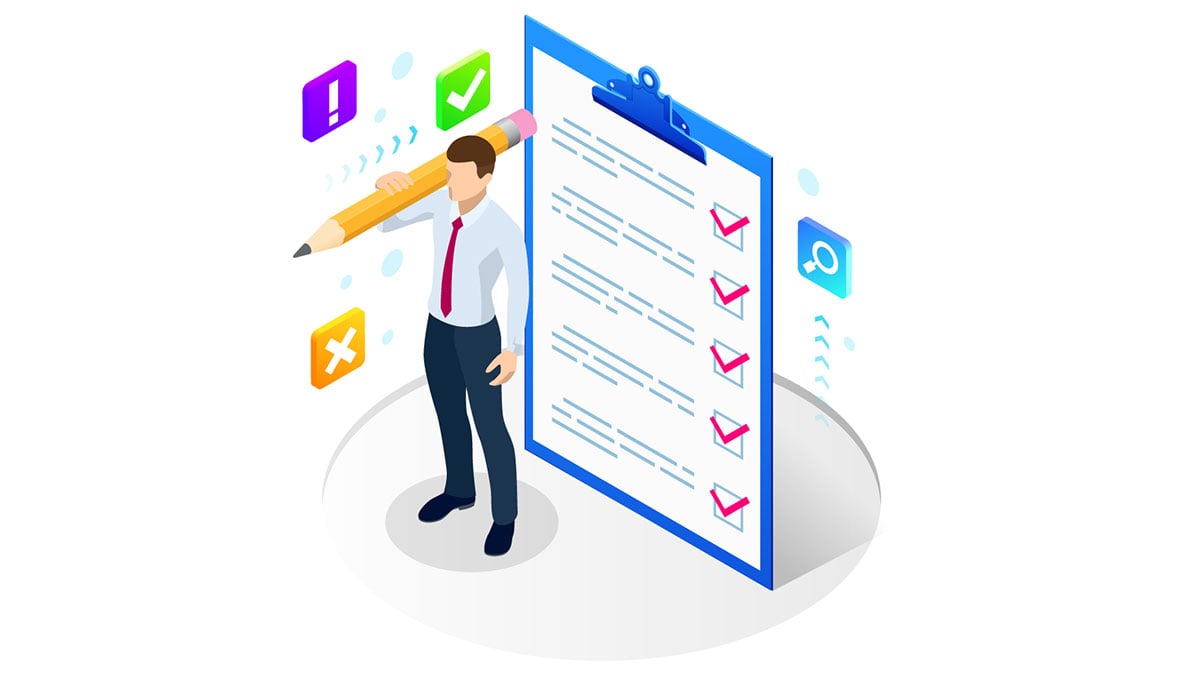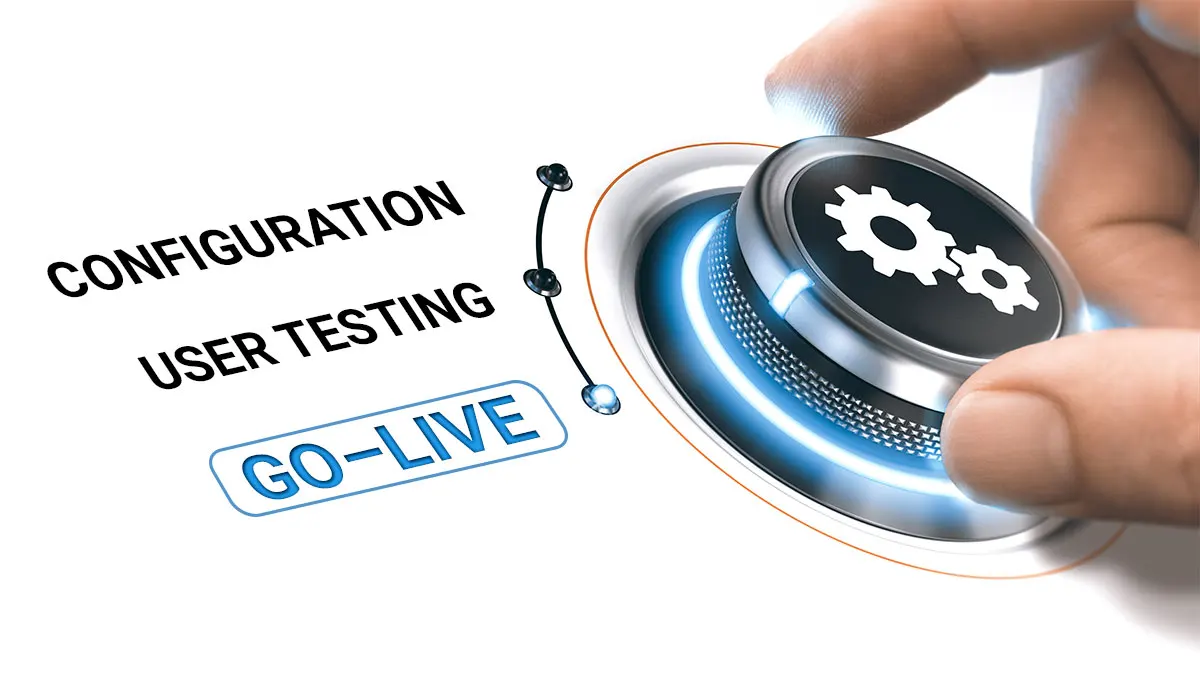ERP implementations aren’t naturally destined for failure. The key to success lies in understanding the enormous scope of such projects, and finding someone who can orchestrate the endless details and moving parts into a successful go-live. These are the new rules of ERP implementation success.

When a company is considering a software update, they may decide to end the process before they have even begun. While the problems and mysteries of an ERP project may seem indecipherable, we have identified the most reliable and effective steps for ERP implementation success.
In this guide, you’ll find:
This guide will provide the answers — but first, we will examine some of the most common mysteries of ERP implementation.
The first major mystery of an ERP implementation is not having accurate data on where to begin and how to manage the process. But by following our guide, you can understand every step in an ERP implementation project and know exactly what to do and when. Having just a little bit of knowledge can make a large project less daunting.
Time is a crucial factor when planning for an ERP project. How much time will it take to train employees on the new system and processes? How long from step one until deployment? Inaccurately estimating the amount of time of a particular step in the process can cause a ripple effect until you are going over budget or not going live on time. Creating an ERP implementation plan will help you understand what steps are needed and how much time is required for each one.
Finding the right software and implementation partner is only half the battle, you also need to understand how to work with ERP system implementation vendors. Most important is communication. Never assume that a vendor knows every feature you need just because you have given them an overall view of the departments that will be using the new products. Also, it is vital that you find out from the very beginning of a project which parts of the implementation process will be handled by your vendor and which ones will be handled by your team. Many ERP implementation failures stem from assuming that a vendor is going to handle more of the process than they actually do.
Once you have a product and vendor selected, and have written a thorough implementation plan, it is easy to think that everything will run smoothly from that point. But to have a successful go-live, it’s important to set realistic expectations for your team and for your implementation partner. Remember that nearly every part of an ERP project can go beyond an initial estimate, including the budget and timeframes of each phase. Thinking realistically and planning for contingencies will help keep a project from getting into trouble.
Following our guide will help you to solve the ERP implementation mystery and alleviate any fears you have about the process. In it, you will learn what the key components are for an implementation, which will enable you to look realistically at your company’s time and resources for the project. You may then decide to take on the project yourself, or that it is more practical to get help.

Launching into a new ERP implementation project can be frightening — and, as it turns out, this kind of stress and anxiety is completely normal for such an enormous undertaking.
Thankfully, we have learned from working with our clients that ERP fears don’t lead to failure when you face them and communicate about them.
While we outline some of the more common fears, and how to overcome them, it is important to communicate your specific concerns to the implementation partner. We also recommend working with experienced ERP implementation consultants who can help navigate the chaos and take some of the terror out of the process.
One of the biggest fears people have about an implementation project is that absolutely nothing will change. You could go through months of work, spend hundreds of man-hours and your entire budget, only to end up with so many problems that you never go live. Then you are stuck with the exact same software you have now, which already had issues, or you wouldn’t have needed the implementation in the first place.
How to Overcome it: Make certain that you know as much as possible before you start a major software update. Understanding ERP implementation phases will help you know what every step is and how to ensure that each one is completed. If you have the correct plan and stick to it, your chances of a successful go-live are much greater.
Imagine that you pick the right software and go through all the steps of creating an ERP implementation plan. But after all is said and done, your budget ends up being 50% higher than anticipated. At some point you will need to go to senior management and present all the reasons why more funds are needed. Sadly, this fear is all too real and such a situation could even lose someone their job.
How to Overcome it: Take a close look at your plan and all the time and resources involved. Communicate a lot with your implementation partner so that they know each department that will be using the new software, and every possible feature needed. Also, be sure to build a hefty contingency of around 25% into your budget, to cover any potential surprises.
Ask any CFO about doing an ERP implementation and they’re bound to say that it’s much too risky. Truthfully, they wouldn’t be incorrect in that assumption. ERP projects are big operations that take a lot of time, money, company resources; and there’s more than a small chance that it could end up in a failure to go live.
How to Overcome It: Compare the risks of an ERP implementation to not updating your software at all. Could your current software keep up if your company were to acquire significantly more business than you have now? If you suddenly got a spike in sales but lost valuable financial data or had massive shipping delays due to antiquated software, how much danger would your business be in then? While an ERP implementation may be a scary proposition, sometimes not making a change at all can be even scarier.

Experience has taught us to anticipate ERP implementation challenges — in fact, planning for how you deal with the unexpected may be more important than the challenges themselves. ERP project teams should be prepared to deal with issues to mitigate damage or delays.
As ERP implementation consultants, we have seen it all, so we prep our clients ahead of time on what to anticipate. Below is a small sample of some real-life challenges we’ve been asked to help with.
Data cleansing, testing and validation is a big deal. Good data is central to any successful migration. In general, this process should begin at least six months prior to implementation and longer for multinational or complex companies. Your new system will choke without good data.
Anticipate mind-numbing complexity. Seek outside education where possible. Get to know what governance structure is in place. Secure internal alliances and outside advice. Buckle up for what could be a bumpy ride.
Software selection should be preceded by a well-thought-out IT or Information Strategy. Without one most software sounds good, but how do you know you’re making the right choice? A common misstep is targeting software to automate what your company does now. You don’t necessarily want to replicate current processes but improve them or in some cases even eliminate them.
P.S. Don’t be lured by “limited time” software discounts.
Budgeting for and timing of a successful go-live is both an art and a science. You are dealing with multiple variables like executive alignment, operational preparedness and people readiness. Perhaps unlike other company initiatives this one needs some flexibility to get it right and to manage deployment choices.
A tested set of phases governs most well-executed implementations. The good news: with ERP projects come different approaches. For example, you may decide not to install all software modules all at once, instead preferring to stage them, managed with an Agile approach. From handling surprises to efficiently helping measure cost and scope, including an independent ERP advisor as a partner will help you identify ERP implementation pitfalls and get you closer to your goals.

Before you begin a new software update, it’s important to know how to plan an ERP system implementation. There are few things you should understand when you are going into an ERP project that will help you to have the right expectations before you start.
If you go into an ERP project expecting perfection, you are going to be disappointed. No matter how much you plan for every possible contingency, you simply won’t be able to predict everything that can happen.
The best you can do is be prepared for surprises, and ensure your time allotment for the project and your budget are both well padded. Be sure you mitigate what you can, such as preparing for a known personnel change, and be ready for anything.
Going into an ERP project, you may not want to think about doing another one. But as organizations get bigger over time, business requirements change. An application you bought and successfully implemented may not have the functionality you need a few years down the road. When that happens, you may be able to squeeze a little more time from the product. But it’s usually better to get back into the market to look for a new software solution.
ERP implementations are complicated and require a lot of coordination and planning. While one person may have the capability to take on a project, it’s not always recommended. If you are new to your organization or the project will affect multiple departments, or you’ve never been through an ERP system implementation before, it is advisable to get assistance to avoid a possible disastrous result.
Now that you know what you should expect during your implementation of an ERP system, it’s time to learn how to plan an ERP implementation.
By following the steps above, you can create an ERP implementation plan to help you have a successful project.

ERP projects have a lot of moving parts. While some organizations feel they can tackle an implementation project on their own — and that may be the case — the complexity of a major software implementation can be overwhelming.
To ensure your implementation will be a success, you will need people who have experience with ERP projects, and who also have the time to spend on an implementation. Sometimes internal resources are available, but it is important to know when to call in an ERP implementation consultant, and how to find the right consultant for your project.
In the current climate, especially with mid-sized organizations, employees have a lot of duties to perform and projects that need to be completed. These people are often working days, nights, and weekends — sometimes up to 50 or 60 hours a week.
You will need your best people on something as important as an ERP project, but unfortunately your best people are also going to be your busiest. If you attempt to take those employees, hand them another project, and expect them to keep up with all of it, you’re asking for a disaster.
The biggest indicator to look for when deciding if you want to hire an outside consultant is this: Are your internal people so busy with their day jobs that they cannot do the additional tasks needed to complete an ERP implementation? If the answer is yes, you need an ERP implementation consultant.
Another factor to consider when deciding whether to hire an ERP consultant is experience. ERP projects can be complicated and intense. To ensure your new software goes live successfully, you want someone running the project in your organization who has experience with implementations. Preferably, you want someone that is quite seasoned and has seen the ins and outs of everything imaginable that can go right and wrong within such a project.
Ultimately, if you need a project done fast, or you need to ensure that it is done correctly and with the best quality, hiring an ERP consultant is vital. It might be a more expensive option, but it will be worth it in the end. It will allow your team to continue working on their own projects, rather than being pulled off onto an ERP implementation.
A PMP is a person who has received certification as a Project Management Professional. They are specially trained to run projects on a large scale, and they can be a great option if your organization has a large ERP implementation but no one with the experience to run it.
An ERP implementation consultant is a person who is experienced with ERP software updates. They have done these types of projects before and can help firms that haven’t done an implementation, or those organizations that are too busy to work on the project themselves.
If the majority of your ERP project will center around a specific part of your organization, such as the accounting software, you could hire your own accountant to help you with the implementation. They can work with your implementation partner to get data migrated to the new system, as well as testing to ensure everything is working properly.
If your own team is unable to handle the internal tasks of your ERP project, another option is to hire from an outsourcing firm. This is also a good alternative if you do have someone in your firm with the experience to run an ERP, but not the time to do it. The temporary employee can either do the internal tasks for the ERP project or handle another employee’s daily duties, freeing them up to work on the implementation.
Another option is to hire a new person for your organization and have them take on the project as their full-time job. They can gather data for your implementation partner, help test the product, and do whatever else is needed to keep the project running smoothly. This is a great choice if you know that you will be busy enough to need an additional employee in the future. Once the project is over, you can move them to another position within your firm.
If you have a large project, or your project will affect multiple departments in your organization, you can hire a consulting firm that specializes in ERP implementation. They will have the experience to take your organization through each phase of the project. They will also have multiple people who can handle different aspects of the implementation.
ERP projects come with their own set of challenges, and it will be crucial to have someone familiar with the ups and downs in an ERP implementation. There are always a few hiccups here and there to be expected in almost every implementation. You need an experienced ERP advisor to find the hidden dangers and help mitigate risks. If you don’t have anyone on your team who has been through an implementation before, it could spell disaster for your project.
Not all ERP consulting firms are the same. Contact ERP Advisors Group today for a free consultation with experienced consultants who can assist you with your ERP implementation project.

CFOs about to start an ERP implementation may wonder if it is possible to go live and still keep their jobs. There’s no doubt that a project of this scope can be dangerous, but it doesn’t have to be if you understand what you can do to keep the plan on track.
When it comes to ERP implementation, MVP means the Minimum Viable Product. This is what you absolutely, positively need to have a successful launch. To ensure a project’s success, you must be able to tell your implementation partner exactly what you require from the new software. The more information, the better. If you need a report to pull precise information from multiple departments to do a vital function, this needs to be included as part of the MVP.
On the other hand, be sure not to add unnecessary requirements to your MVP. Don’t add steps to the process just because they might be “good to have”. Know the different between what is absolutely needed and what can wait for a later phase.
Now that you know how important it is to get the MVP, how do you figure out exactly what that is for your company? You need to have the right Subject Matter Experts, or SMEs. These people must be able to communicate what is needed in a way that is understandable, which a true expert can do. A less experienced person may make suggestions that could send the project chasing after the wrong objective, which would waste valuable resources.
Depending on the size of your company, the size of the project and the areas being updated, it’s possible you may need multiple SMEs. If you can find the right SMEs and keep everything moving toward the correct goal, you can keep your job during an ERP implementation.
After you have the right SMEs lined up and they have provided the MVP, you may have to make some tough calls. Sometimes you will have to look at what is being requested and determine if the solution they asked for is reasonable. It may be that some of the requested features can wait for a later phase of the overall project or aren’t needed at all.
Anyone running an ERP implementation must know their SMEs and understand the company’s processes at a high enough level to know what is really needed.
One major factor that could affect someone’s job during an ERP project is failing to deliver what the original scope was. Meaning that you go live but certain portions of the program are not ready. For instance, the manufacturing department is unable to use the ERP, but the finance department is just fine. In such a case you may end up with a VP of Manufacturing asking why someone was put in charge of a job and couldn’t deliver what was needed.
Prevention: To prevent this issue, you have to be willing to take on the responsibility for all areas affected by the new system. Make sure you understand all the steps for ERP implementation. Communicate a lot with your team and confirm that everyone is getting their MVP. Most importantly, don’t leave it up to anyone else to verify this is occurring. You never want to look back on a failed project and wonder what happened to a particular feature because someone else was supposed to oversee that. Get all the data for yourself.
An ERP project that goes live but doesn’t work would absolutely be a danger to one’s job. If the updated software doesn’t function, it can create the types of issues that shut down an entire business. For instance, if the Order Entry module can’t accept orders and the Order Fulfillment can’t fulfill them, nothing will ship, and your business would be at a standstill.
Prevention: Prevention of this issue is simple as it is often caused by a testing failure. Make sure that you have the right people in place to test the software before it goes live. Get those important SMEs in and have them go through every process, every single step, and you can prevent this type of catastrophic implementation failure.
Budget is a highly talked about aspect of an implementation failure and is usually considered to be the most important to stakeholders. Depending on the project, it might be safe to go over budget by quite a bit without too much of an issue. But things change quickly when errors drive a budget three, four, even five times over what it should have been. With those kinds of numbers, unfortunately it becomes very likely that someone could lose their job.
Prevention: Going over budget doesn’t just happen magically and out of the blue. It’s often a symptom of other underlying issues, which usually come up early in the project. Successful ERP implementation methodology will show the initial indicators that something is wrong. When this happens, customization is used to fix it, but that may cause more problems requiring more customization. Before you know it, you could end up with an inflated budget. If you see something starting to go wrong, make it known. Ignoring your instincts could end with an unsolvable problem that costs your job.
Anyone running an ERP implementation has every right to fear for their job. But with the correct information and a great team, you can go live successfully.

Sometimes the difference between ERP success and failure is not always what we think it will be. Truthfully, no one can define a successful project other than those people who know what is needed and wanted from the new applications.
While of course ERP implementation best practices should be followed, the difference between the success and failure of an implementation project is a very, very gray area. Though it would be easier if someone could give you a list of exact items you will need for your project, there are no blanket criteria that will define whether or not a project is a success.
The best way to define ERP implementation success is to determine the following:
But setting expectations isn’t just about knowing what questions to ask — it’s also about knowing WHO to ask. Before starting an ERP implementation, find out what the success criteria would be from anyone in your organization that will be affected by the implementation, including:
At the beginning of the project, speak to all of the above stakeholders and anyone else who will use the new system or be a part of its implementation. Find the people that really matter, the key opinion leaders, and once you have their criteria, build those expectations into the project meeting.
Your ultimate goal is to arrive at the end of the project and be able to list out every expectation and show how it was delivered. Only then will you be able to declare if your project was a success or a failure.
When doing an ERP update, functionality is going to be one of the top expectations on most people’s minds. Find out what problems need to be resolved, what pain points your company has, and which departments will use the new software. Confirm with your implementation partner that the requests can be met and then put those expectations down as the items that need to be accomplished to have a successful go-live.
Not everyone is going to have the budget high on their expectations list. For instance, the end users may not care how much the new software costs to purchase and install, they just want it to work. But the higher you go within the organization, the more important money becomes. Be sure you know all the functionality requirements, and get a clear picture of the budget from your implementation partner. Then you can manage those expectations and monitor expenditures throughout the project.
Time may not be important to everyone, but it is a valuable piece of information for ERP implementation success. One part of the plan may call for the sales system to be down overnight for updates. But if that timeline increases to 24 hours instead of overnight, the effect may be felt across the entire organization. And if the schedule goes 30 days past its expected go-live, it may cause a ripple effect throughout your organization. Ensure you have all information and have gone through every contingency to set the time expectations appropriately.
No matter how many people you meet with and how many expectations you have going into a project, it is inevitable that something will need to be changed. Rather than hiding from these realities, it’s important to take responsibility for them and to communicate to everyone who needs to know. This is vital for achieving ERP implementation success.
Also be sure that you can clearly communicate the reasons why the change has occurred. Find out the exact reasons for the change from your implementation partner, and be relentless about getting that information. If the partner is letting you know that the timeline or budget has to be increased, or a functionality is going to be lost — and they can’t tell you why — then something is very, very wrong. Be willing to order a stop on all work until they give you those answers.
Once you have the reasons, you can go to the board of directors with confidence to request an adjustment in expectations. As an example, if you can tell them that a specific application is going to require additional hours of programming due to testing failures, and you need to push the timeline out an additional 30 days, this shouldn’t be an issue. An organization is usually made up of bright, sharp people who should take that information and agree that such an extension is necessary.
Setting expectations and, if necessary, adjusting expectations is only part of a successful ERP project. Once you have the expectations, use them to create a timeline and list of milestones that must be completed. One large task on the ERP plan will usually take many smaller steps to accomplish. Consider these sub-products of the bigger project and manage each of these milestones ferociously. A project can go off track by missing just one seemingly insignificant step. But if you have correct expectations, set correct milestones, and meet each one, you are practically guaranteed a successful implementation.
One final and vital component in a successful ERP implementation is user participation. If your project comes in on time and on budget, but no one uses the applications, it was still a failure. You need to ensure that users are not only involved in the beginning when setting expectations, but that they continue to do their part throughout the project. Ensure that users are training on the new software and testing it relentlessly. The end users will provide the crucial feedback needed to verify if a system is working or not. Don’t get to the end of a project and realize that you should have asked the users earlier if they were having any issues or needed anything more to do their jobs.
Though no one can decide for you and your company what the difference is between ERP success and failure, the above guidelines can help you find that information for yourself. Follow these steps to make sure your project goes live successfully.

If your company has put resources into new software, only to have the project go off the rails, you know how important it is to recover from an ERP implementation failure.
First, let’s understand what an ERP implementation failure is. Simply put, it’s a project that doesn’t go live with what management and the owners expected. If a project never goes live, or if it goes live years later and far over budget, it can be considered a failure.
What happened? How did it go wrong? What do we need to do to get the plan back on track? Why do ERP implementations fail?
These are the questions you may be asking, and the simplest answer is that there are four key areas that you need to assess to discover what occurred and how to fix it:
Let’s take up the first of these, functionality. After an ERP implementation project has failed, you may be tempted to look at the plan and assume that all previous steps have been completed. One of the first steps of the project would be looking at functionality, knowing what areas of the organization are going to utilize the software. But it’s vital to start with fresh eyes and take a new look, especially if the project has been ongoing for a while. Is it possible that the functionality has changed? This is important data to have before attempting to correct an expensive ERP project disaster.
Next is data, which means assessing all the various pieces of information that will be used in the new ERP software. Is the data complete, is it currently organized, is it known what data is going to be used in the new system? This must be done before putting an ERP implementation project back on track. If the data is not organized going into the ERP software, it will be that much harder to implement.
As for integrations, you need to ask: What systems and departments will need to communicate with and pass data to the ERP? Again, if a project has been stalled for an extended period of time these requirements may have changed. Or it is possible that the information wasn’t collected properly the first time. In order to recover from an ERP implementation failure, you will need to know what integrations are still needed.
Finally, the infrastructure needed for an ERP execution plan can be easily overlooked. While the team is working to ensure everything functions and the end users understand the new software, something can be missed. Look at what will be needed to implement the new software. Will the shipping department need iPads to run the inventory tracking part of the system? Are new printers needed for the accounting department to print the updated invoices?
While it may seem complicated, the good news is that it is entirely possible to recover from an ERP execution failure. Look at the areas above and see where they are in the sense a normal software development process of analysis, design, build, test, change management, training, documentation, cutover prep and go-live.
If the team assumes that they are close to the training step, but vital information is still needed to determine functionality, you may have to go back to analysis. None of the steps can be skipped, but if every single one is done fully to completion, you can avoid an ERP implementation failure.
The key is to find the underlying problem that caused the failure and fix that. Don’t be afraid to ask the hard questions and be willing to do whatever it takes to resolve the issue. Assess the information above and you may find one simple issue. Sometimes finding the problem can be the hard part and fixing it can be the easier step.
Now that you understand how to recover from an ERP project that has stalled, what can you do to avoid ERP implementation failure in the first place?
The biggest causes of ERP implementation failure:
If the team is going into a project saying “if everything goes perfect, we’re going to make it” the project is not going to work. Something is always going to go wrong, and the team needs to be prepared for that.
In order to ensure a successful ERP implementation, you need to have a structure for that team that’s different from the day-to-day business. You also need a great executive leading the team who can make decisions quickly, as waiting a long time for each decision will cause a project to stretch out and fail.
Writing things down is vital if you want to avoid an ERP implementation disaster. You need a written plan so that you can focus on each step one at a time and ensure each one is completed. If you can do that, you can be successful.
Whether you’re trying to recover from a plan that went awry or avoid an ERP implementation failure in the first place, perhaps the most important thing to remember is: Communicate, communicate, communicate. If all members of the team, from all sides of the project, communicate and resolve each issue as they arrive, you should soon see your new ERP software successfully in use.

People say a lot about ERP projects, but it’s not always positive. While a discussion of the rules of ERP implementation success can include some uncomfortable details about what must be done to avoid failure, here are 3 bonus rules to help you have a successful project.
NEW RULE: Change Management Doesn’t Have to Be Scary
Change Management has always been looked at as a bit elusive regarding ERP implementation. Some view it as a scary proposition but that isn’t always the case. While it’s true that it can be complicated, change management doesn’t have to be frightening.
When discussing change management in the past, people were known to say things such as how it could make or break a project. They might have even said that only those with specialized skills had any chance of successfully managing a software implementation.
But the new rule of change management is that it can be done by just about anyone and it only takes one vital thing: Communication. After all, change management simply boils down to guiding users through a transfer to a new software application. The best way to achieve this is to communicate. Users need to understand the impact an ERP project will have on them and their areas.
Successful change management depends on having a strong communication plan with users throughout your ERP implementation. Do this from the very beginning of the project, don’t wait until things are already underway and then try to get users on board with the new software. Get involvement from users up front, including the selection of the product itself. Ensure that your users have an opportunity to give input about the new application and the implementation as well.
Once users are aware of what is occurring and have provided helpful insight, keep that communication going. Ensure that they know what’s expected from them throughout the implementation project. Give them whatever help they need to understand the new software and continue to ask for their input as the project goes along.
Lastly, give your users any assistance they need during their final testing of the product. Users can be your most valuable asset when it comes to knowing how the product does or does not work for your organization. They will also be your first line of defense to ensure any bugs in the software are found and resolved.
NEW RULE: IT’s Role in ERP Implementations Has Changed Forever
Another new rule of ERP implementation is that IT’s role in these projects has changed forever. Gone are the days when IT departments initiated and completely ran software changes. Truthfully, IT teams don’t need to be involved in an ERP implementation and nor do they usually want to be. This is a fact that holds true whether you are a $12 million business or a $500 million business.
The reason for this is simple: The business should drive the need for software. The functionality of the organization will determine what is needed from its software solutions and dictate any need for an upgrade. IT should be there to support those solutions, but not necessarily choose them.
In the new world of ERP implementations, IT’s role should be to simply check that any new software selected meets corporate policies. They will also confirm they can do things such as configure it, monitor it, and integrate with it. After they have ensured the new software is okay, they will give their approval for the ERP implementation. But at that point they will turn it over and no longer help run the project, which is a huge change from how ERP projects ran previously.
While it may seem harder on ERP project managers, this new rule allows more control from the people and departments that will be using the product. Rather than upgrading software for an IT agenda, the product will be chosen by the needs of the organization itself.
New Rule: You Can Actually Be Happy with Your ERP
Another new rule of ERP implementation is that, yes, you can actually be happy with your new software. Despite what some have experienced previously, not all ERP projects end in disaster. Many of our clients enjoy sharing their ERP implementation success stories.
Once you have completed an ERP project, there is no reason why you shouldn't have software that does exactly what you need it to do. You should end up with an application that helps your employees to be more effective and creating on the organization in all the ways that you wanted when you began the project. There is also no reason why the software won’t help your organization automate those processes no one wanted to do in the first place.
In days past it might have been the case more often than not to end an ERP project with software that didn’t function, and no one wanted to use. Back then users might have just reverted to using the old software when the new application was found to be missing vital functionality that no one discovered until it was too late.
But these days there is a lot of information available about how to have a successful ERP implementation. You don’t have to go into a project blind and unaware of what is needed to successfully go live. Instead you can end a project with a product that increases the efficiency and effectiveness of your company. You can be happy with it; users can be happy with it and customers can be happy with it. While these outcomes might have seemed like impossible dreams before, they are the new reality of ERP.
Colorado
390 Union Boulevard, Suite 540
Lakewood, CO 80228
866-499-8550
303-350-3087
info@erpadvisorsgroup.com
Florida
600 Cleveland Street, Suite 379
Clearwater FL 33755
866-499-8550
info@erpadvisorsgroup.com
Terms & Conditions | Privacy
© 2025 ERP Advisors Group